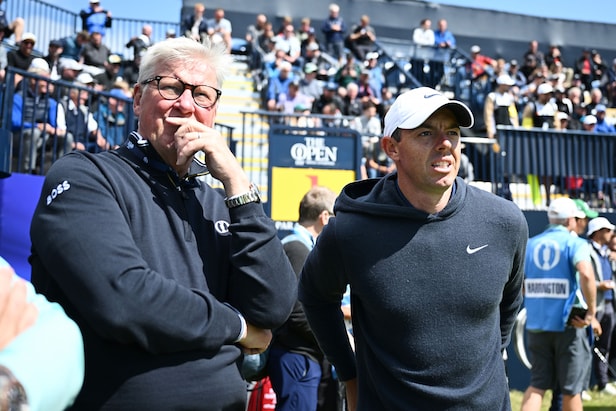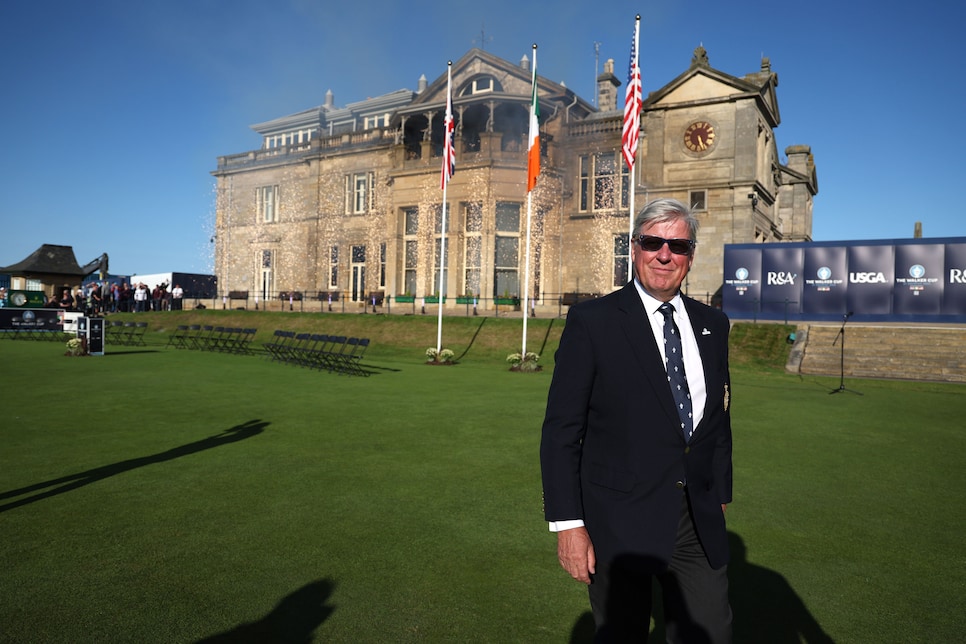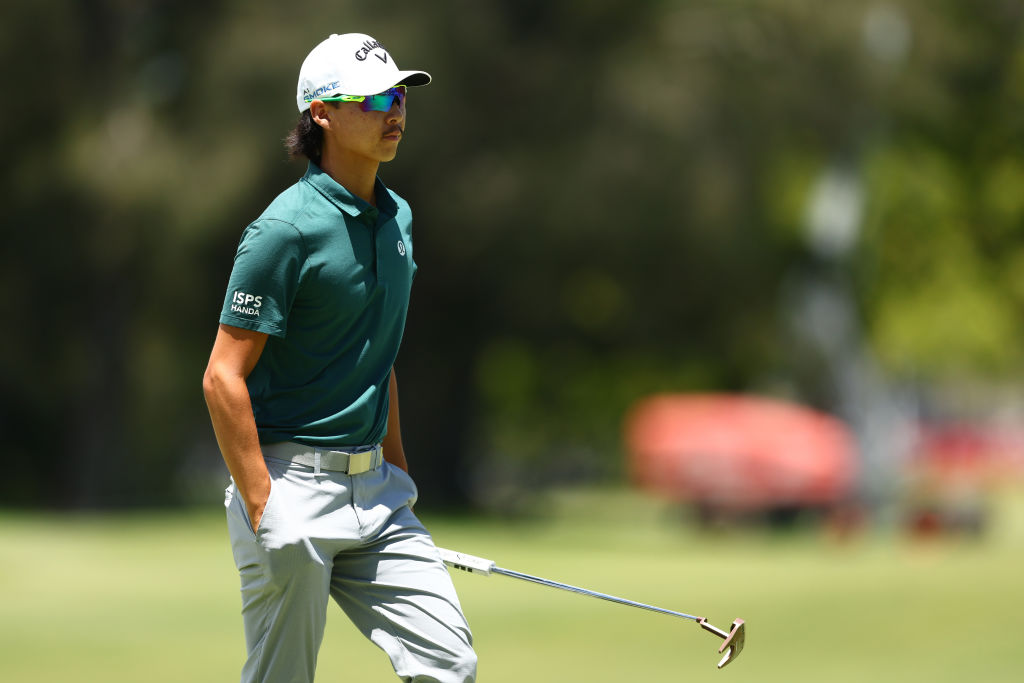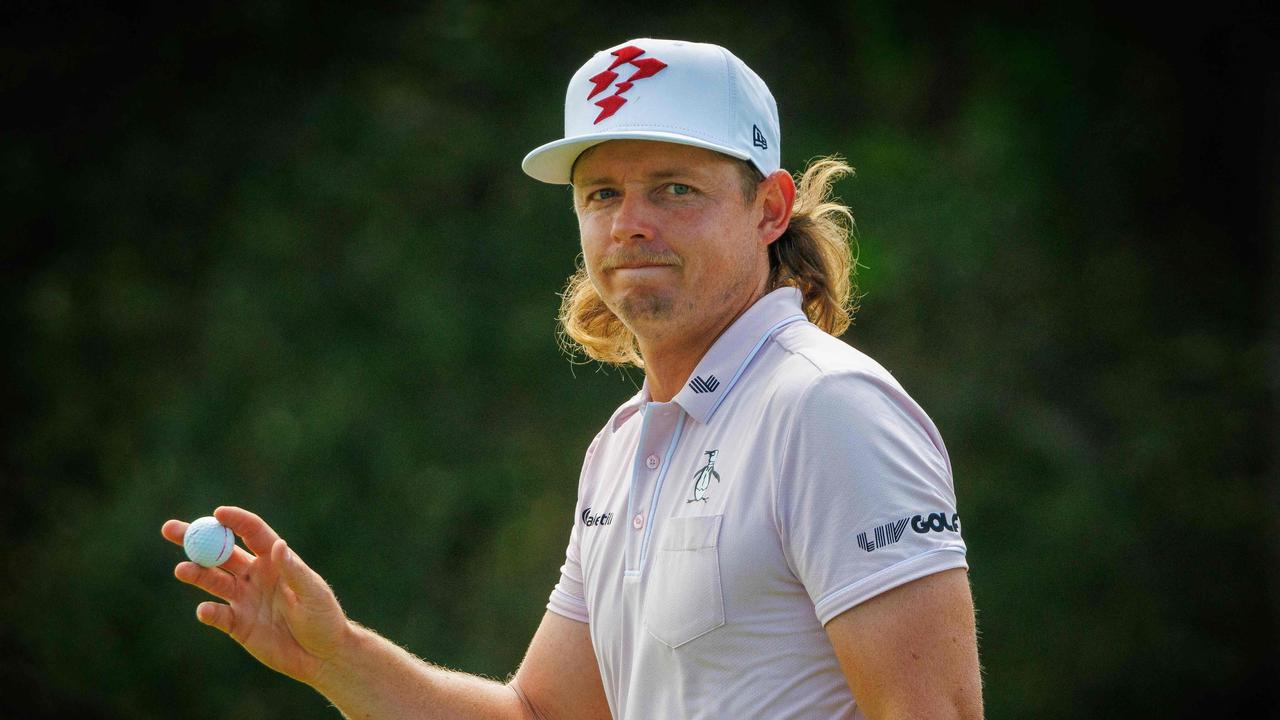A few final words with Martin Slumbers – Australian Golf Digest

- by Admin
- November 23, 2024

After 10 years on the job, R&A Chief Executive Martin Slumbers is leaving the post next month. Before he goes, the 64-year-old Englishman sat down for a chat with Golf Digest in what has to be the best office in golf, high above the first tee on the Old Course at St. Andrews in Scotland.
Editor’s Note: The interview has been edited for length and clarity.
You’re going to miss this view, aren’t you?
Oh yes. I’m just realizing how much, especially in the morning and last thing at night. Yesterday, at 4:30 or so, it was dark, and the office is cozy and peaceful and a lovely place to think and work.
What would you like people to say about the things you’ve achieved with the R&A?
I had a list of things I wanted to get done, and they are all ticked off. But three things stick out. We’ve transformed The Open. It needed a cleaner brand. It needed to be much bigger. It needed to be more commercially successful, because it fuels everything else that we do. The size of the crowds creates the atmosphere. I remember going to my first Open at Troon in 2016. There were 170,000 people there. It’s a big course and it felt empty. This year we had 250,000, and it certainly did not feel empty.
The second thing is linked to The Open. We made a commitment to spend double the money we were investing in the game, from £100 million to £200 million. If we hadn’t improved The Open, we wouldn’t have been able to do that. We’ve been able to invest in not just the championships we run but also into driving participation. We have become much more influential in that area. In our jurisdiction, we now have 62.3 million people playing golf. That’s a million higher than it was a year ago.
The third thing is getting more women and girls playing golf. The merger with the Ladies Golf Union {in 2017] was instrumental in that. It gave us a platform. But we’ve taken that and put our foot down hard on the accelerator.
It had already started before my time. I remember having coffee with one of our top sponsors two years into my job. He told me he had just figured out what we were trying to do, which was modernize the game while keeping it reflective of history. And that is what we have done. I’ve learned to appreciate how important this place is to the game. Not just the Old Course. Not just the town. But this building. We must never forget that, while using modern language around it.
Going back to The Open, what do you say to those who think the championship has lost a lot of its charm in getting bigger?
I’ve heard that. I don’t agree with it. There are two aspects to this. If you want to host a great sporting event like the Olympics, you have to reflect that.
What sort of things do you mean?
The spectator experience. When The Open was smaller, we didn’t treat the spectator with much respect.
Do you now? Parking is sometimes miles away, you bus fans in and they are told to stand over there and keep quiet. Is that such a great deal?
I’m a businessman at heart. Every good business does a lot of research. We do a huge amount during The Open. We talk to spectators. We talked to sponsors. We talk to the media. We talked to the volunteers. We talked to the players. From all of them we get feedback, some of which we don’t like to see. That’s tough. But a lot of them would recommend The Open as an experience. And it has gone up, with Portrush in 2019 the peak. So spectators, despite The Open getting bigger, are telling us they have a better experience.
What do they like?
They like getting close to the players. Look at the stand we have behind the driving range. We were first to put up the Top Tracer screens on the range. Now everyone does it. We erected viewing platforms, rather than grandstands. Spectators don’t mind parking a few miles away, as long as they are quickly into the course. We brought in specialists in logistics to tell us how to move people around. So, although I hear that noise you mentioned, the hard market research doesn’t reflect that.
This next question comes from Rory McIlroy: “Who are the people standing in the way of the changes you would like to make to the distance issue?”
(laughs) Thanks Rory. The decision has already been made.
Slumbers stands with Rory McIlroy on the first tee at Royal Liverpool during the 2023 Open Championship.
Richard Heathcote/R&A
I said you would never answer that question.
(laughs) I’ll be texting him later. The decision has already been made on the ball. The change is coming in 2028.
RELATED: USGA/R&A announce ball rollback for all golfers
Is it enough?
[USGA CEO] Mike Whan was asked that question a couple of weeks ago, and he said he would like to have done more. I agree with him. We did propose a model local rule for elite golf, which would have gone further. But that was roundly rejected by the industry. That led us back to changing the ball for everybody and dialing back what we wanted to do. I’m not delusional enough to think what is coming in 2028 is a significant rollback. It will hold things where we are today. But that decision is made.
How frustrating have you found wanting to do more but not being able to?
We have an industry that is very different from what it was 40 years ago. While I was clear in my mind about the objective—preserving the game—I have been open about balancing skill with technology. At the same time, I wanted to create more opportunities for recreational golf. At that level a drive that is easy to hit is a good thing. So we have to balance it with technology.
I know you call me a politician, but I knew that because this was probably the most significant change for decades, we needed to be aware and we needed to consult. We had an agreement with the industry about how we would do that. Did it take longer than I wanted? Yes. But it had to be done that way.
Back to Rory’s question, the USGA and the R&A are the only two bodies in the golf eco-system that are truly independent. The purpose of the R&A is to ensure the game is open and thriving 50 years from now. We wrote that in 2017. We have to look at the bigger picture and balance up all of those things. I am proud of the way we and the USGA have acted. We’ve acted in a collaborative way. Yes, there have been impediments, but we have worked through them.
‘The constant dialogue of money has damaged the reputation of the sport, which is one of the reasons why the public is not watching as much golf as they can.’
Billy Horschel wants to know how you view the current talks between the PGA Tour, the DP World Tour and LIV Golf’s financiers, the PIF?
We’re not at the table. The current position of the professional game is very bad. We have created a game that is immensely divisive. I’ve talked about the financial unsustainability of the professional game. I will stand by that and keep saying it. That has caused significant problems. The constant dialogue of money has damaged the reputation of the sport, which is one of the reasons why the public is not watching as much golf as they can. I truly hope that peace and stability is reached soon.
I have no problem with one tour or two tours. I grew up watching a game in which the European Tour was very strong. But there was stability, and the best played each other more than four times a year. I am more frustrated by the lack of progress there than in the other issues we have just discussed.
There are players who think they are overpaid, yet you keep increasing the prize money in The Open. Why is that when the players would still come anyway?
We have increased The Open purse more than we wanted to. [In 2024, Xander Schauffele earned $3.1 million for his win from an overall purse of $17 million, compared to $10.25 million in 2017.] But a lot less than anyone else. The prize money has been a massive problem for us, in terms of how much we have had to increase.
RELATED: The major that never happened—the story behind the cancellation of the 2020 Open
Have you had to?
The prize money has shot up so much in regular golf. I was challenged during The Open this year about why The Open ranked No. 28 in prize money. I had no idea we were No. 28. But when you are in a professional game that keeps talking about money, that comes up as an issue.

Slumbers looks on at the opening ceremony prior to the 2023 Walker Cup at St Andrews.
Oisin Keniry/R&A
Have you passed the stage of being in awe of some of the people you have met in your job?
I don’t get intimidated easily, but I was the first time I met Jack Nicklaus. I always adored watching Tiger play golf. But for me Jack is the best player the game has ever seen. So I was very nervous meeting him.
But he’s not your favorite golfer.
No. That’s Seve.
It is one of my concerns about the game. In the run-up to the 150th Open here, Gary Player was here quite a bit. So was Tom Watson. Jack came for the Champions Dinner. That evening is one where I could use the famous Bobby Jones expression: “If I could take everything apart from that night out of my life, I would still have led a full life.” I felt like a little boy. I just sat there and listened.
Gary and Jack are the connections to the past generation that gave us Ben Hogan and Sam Snead and Bobby Jones. They are steeped in the history of the game. We must make sure the current generation of amateurs and the next generation of pros understand the history. Those guys won’t be around forever. And we will lose that connection. Jack has taught me a lot in the last 10 years.
For example?
Just how the game is played. How the game was played. How he played the game. How he brought skills to the game that made him the greatest player ever. And how these skills have been supplanted by technology. We spent a lot of time talking about that and course design. When I saw him at Augusta this year, we had 90 minutes together. I asked him about long bunker shots. So, at 84, he gave me a lesson. It was a ‘pinch me’ moment. I’ll remember things like that as much as anything else in the last 10 years.
‘The purpose of the R&A is to ensure the game is open and thriving 50 years from now. We wrote that in 2017. We have to look at the bigger picture and balance up all of those things.’
Can you see a day when a woman will be sitting in your chair?
Oh, undoubtedly. A woman was on the long list we compiled in the lead-up to my successor’s appointment. That will continue. And I say, ‘why not?’
[Editor’s Note: Mark Darbon, 43, a former advisor to the London Olympics and current CEO of the CEO of the Northampton Saints, the Premiership Rugby club, replaces Slumbers in December.]
Did you practice the ‘champion golfer of the year’ speech before your first time?
Yes (laughs). In the months leading up to my first Open I thought about it a lot. There are many different ways to say it. I felt a responsibility to the R&A and to The Open and to history. I worried about getting it wrong.

Yes, Slumbers acknowledged that he practices his “champion golfer of the year” speech before first delivering it.
Luke Walker
Did you listen to others doing it?
I did. I listen to Keith Mackenzie and Michael Bonallack and Peter Dawson. They had great voices, ones with whom I felt like I couldn’t compete. I did wake up one morning in a cold sweat. My dream was that a player with a complicated name— I won’t say who—had won. So, I start the speech and get to the name. Then I start to stutter, which is when I woke up. If you don’t feel that pressure at that moment, you aren’t really understanding the history.
What is the biggest change in your job over your 10 years?
It is more global. It’s a much bigger business. We employ a lot more people and run a lot more championships, about 40 every year around the world. That has doubled in my time.
The Open rota has evolved under your watch. Portrush, next year’s venue, returned. Will that evolution continue?
We have 10 courses, and they are the best we have. We are happy with those. I don’t see any others that are capable of hosting an Open. But we continue to evolve.
And the USGA announces championship sites years in advance. Any chance you will do that? We don’t even know where the 2027 Open is going yet.
I’m not going to tell you that. I’ll leave it to Mark. In terms of announcing way in advance, I don’t see us ever doing that.
Why not?
Because we like to have flexibility. Things change. We’ve had situations where we have announced five years in advance and something like the Olympics came along. So we had to move. America is a big country. We’re not that big. We know four or five years out. But the fact that we are a much smaller country is the fundamental difference.
Last question: What are you going to miss the most?
I think just the privilege of being inside the game.
Not the journalists?
(laughs) I had no experience of them before I go this job. So no, just the experience of being inside the sport.
This article was originally published on golfdigest.com
The Latest News
-
November 24, 2024Lee sees upside despite ‘freak’ injury in PGA defence
-
November 24, 2024‘Drama’ haunts Smith on final day as young gun wins title
-
November 24, 2024Michael Vaughan suggests Australia’s batting struggles a sign of players who are ‘a little bit too comfortable’
-
November 24, 2024A superstar is born: Young gun plunders century as Australia’s misery continues
-
November 24, 2024F1 Las Vegas Grand Prix LIVE: Horror start for Piastri as ‘huge number’ ignites on-track chaos





